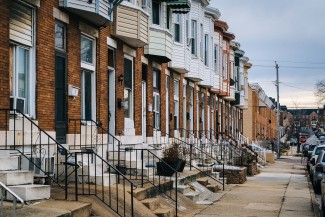Washington, DC—Half of U.S. states require utilities to achieve energy savings targets through their customer energy efficiency programs, but new research finds that most fail to ensure that low-income and underserved households benefit from the programs. According to a new report from the American Council for an Energy-Efficient Economy (ACEEE), only three states have targets for energy savings among low-income or historically marginalized households.
Twenty-five states and Washington, DC, have energy savings targets for utilities—known as energy efficiency resource standards (EERS)—and 13 of those require some level of investment in underserved populations, such as low-income customers or communities of color. But only Pennsylvania, Massachusetts, and DC have energy savings targets for low-income households.
The report calls on state legislatures (or public utility commissions where applicable) to center equity in their EERS policies. States can begin by requiring utilities to devote significant funding toward incentives for home efficiency improvements for low-income households. To reach those who would benefit most from reduced energy bills, states should also set targets to reduce energy burdens across diverse populations.
“Energy efficiency can make a real difference in people’s lives, especially for the most vulnerable. States need to require that efficiency programs achieve minimum levels of energy savings for low-income and other underserved households,” said Jasmine Mah, research analyst at ACEEE and a co-author of the report. “States that do not track energy savings among underserved households have no way of knowing if the resources invested in those households are benefiting them. Tracking energy savings data in addition to spending data allows states to tailor their policies to maximize their impact.”
Massachusetts is a leader in tracking equity metrics, the report finds. The state requires utility efficiency programs to report their spending in environmental justice communities and among renters, households with limited English language proficiency, and minority- and woman-owned small businesses. Also of note, Pennsylvania requires that low-income customers account for at least 6% of utility efficiency programs’ total energy savings.
Seven states include equitable workforce development and procurement practices in their utility efficiency programs. The report calls for states to provide job training for groups that have typically been underrepresented in the clean energy sector. One state leading in this area is Illinois, which provides grants and loans to woman- and minority-owned businesses in the renewable energy and energy efficiency sectors. Illinois has also established job transition programs for displaced fossil fuel workers to ensure they are included in the clean energy transition.
Utility regulators traditionally have not sought input from disadvantaged communities, contributing to racial and economic inequities. To achieve equitable outcomes, the report recommends that states go beyond merely soliciting feedback from disinvested communities and instead set aside decision-making seats for representatives of those communities when designing and implementing energy programs.
The report also recommends funding to address barriers that prevent participation in efficiency programs, such as the need for “pre-weatherization” repairs necessary to prepare homes for energy efficiency improvements. These include roof repairs, mold remediation, sump pump installation, and addressing electrical or structural issues. In Illinois, the utilities Ameren and ComEd are required to invest at least 15% of their low-income efficiency budget on pre-weatherization work. These measures can also improve indoor air quality and reduce the incidence of asthma attacks and other ailments.
To develop the report, ACEEE reviewed legislation and public utility commission orders establishing energy efficiency savings targets in each of the 26 jurisdictions with EERS policies that had been implemented by the first half of 2022. More recent developments, such as Maryland’s energy savings targets for low-income housing, were not included in the report. ACEEE also surveyed commissions to understand how programs are designed and implemented. Officials in 22 states and DC provided insights into their EERS equity efforts.
